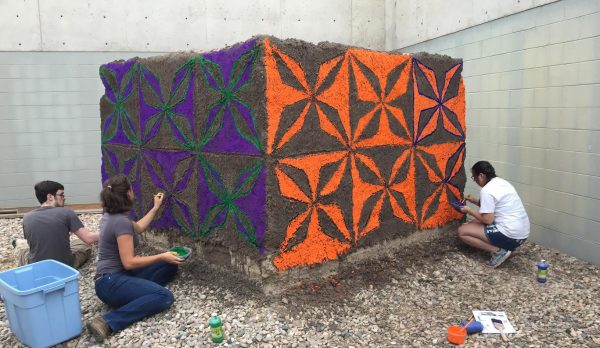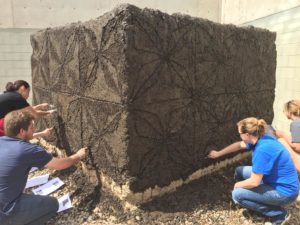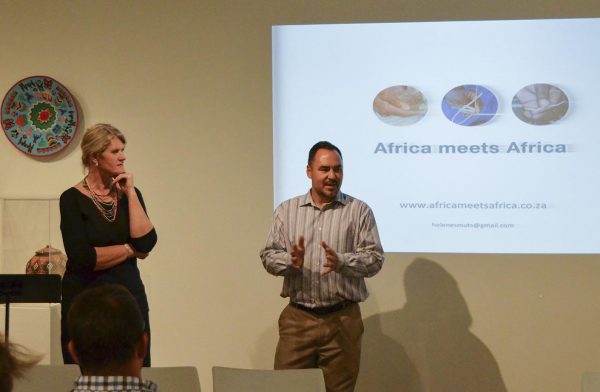As appearing in SOURCE
Colorado State University art students in an “Arts of Africa” class completed a project this fall in which they created a South Sotho mural out of soil, manure and tempera paint, all under the watchful eye of Assistant Professor David Riep in the Department of Art and Art History.
It was all part of a larger effort to better understand how generations of South Sotho people in South Africa have handed down artistic traditions that some Westerners might consider primitive and unsophisticated—even though they are using complex mathematics.

The mural project, located on the south side of the Visual Arts Building on campus, was intended to show the culture and customs of South Sotho artwork. Riep studies the way South African people create artwork with methods practiced by their ancestors, and he’s taken CSU students to South Africa to see it in person.
Collaborative effort

Riep specializes in the arts of Africa and spent five years living in the Free State province of South Africa to perform field research. He has regularly collaborated with educator Helene Smuts, who has spent years focusing on the way African people create extraordinary artwork using complex mathematics.
Smuts is director of the Africa meets Africa Project, which explores the culture of southern Africa and how South African schools can find solutions to modern problems with knowledge and skills incorporated from the forms of cultural expression around them.
As an example, South Zulu peoples create perfectly dimensional baskets and beadwork simply by counting — because that is how their ancestors taught them.
“Their education has grown through a network of relationships,” Smuts said. “They have redefined what knowledge is and how it sustains itself.”
Smuts gave a lecture about the Africa meets Africa Project in CSU’s Gregory Allicar Museum at the University Center for the Arts on Sept. 7.
New curriculum
Riep works with Smuts to understand this as a curriculum, and they are in the process of putting it in writing for public schools.

The Litema Mural his students created, which is part of the curriculum and based on those made by the South Sotho in South Africa and Lesotho, was a contributing piece in the transformation.
The murals, made using soil and cow dung, are created by South Sotho people every December on the outside of their homes to honor ancestors and ensure blessings and prosperity for the upcoming year. The murals are then left to weather away throughout the year, and all materials return back to the earth, which is believed to be the source of life and spiritual dwelling place of the deceased.
“It is a process of art that changes with the seasons,” said Riep. “Artists begin in December because their weather is opposite ours and the soil and manure dry. Throughout the year the mural eventually washes away.”
Riep and Patrick Fahey, and associate professor in Art and Art History, have developed a biennial study abroad trip to South Africa, part of which involves Helene Smuts and the Africa meets Africa project. The next trip is scheduled for summer of 2017.
